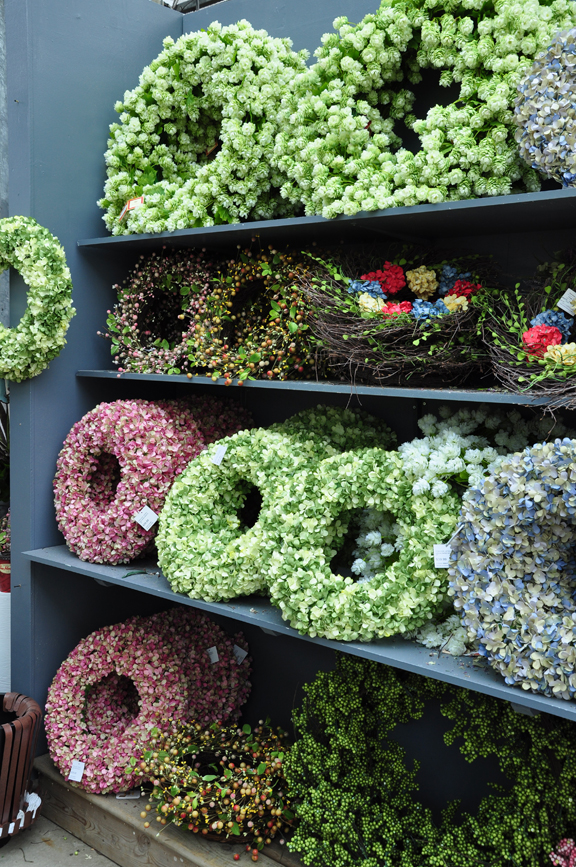It has been mild and raining; hardly the weather to start getting into the holiday spirit, but I have begun to pull out a few holiday decorations anyway.
It is always nice to do something a little different every year. I found these chandelier crystals at a flea market and thought that they might add a little sparkle to my standard arrangement of branches.
I was able to find a couple of shapes for a bargain price. To hang them I simply used the original wire.
I was rather sorry after the fact that I did not fill the glass jar with some white navy beans to make it a little easier to arrange the branches and hold them in place. It might be a good idea if you want to try a similar arrangement.
I added a few glittery snowflakes, tied a ribbon on the vase, added a few sprigs of greenery and my arrangement of branches were done.
In the kitchen, I have tree with homemade gingerbread man. Unlike baked goodies, this gingerbread will last forever because they are made of wood. I can pull them out and use them next year as well.
To make them for yourself, pick up some wooden shapes at the craft store. (If you can't find the gingerbread men, try stars or any other cookie-like shape).
Apply several coats of wood stain with a brush. (I used Minwax 'Puritan Pine' Stain for my cookies.) Wipe away any excess stain with a dry cloth.
Allow the stain to set and dry as per the manufacturers recommendations.
Then with a fine brush and some white acrylic paint, create the "icing" by painting fine line around the perimeter of the cookie. Add a smile, some eyes and a bow-tie.
I did not add a top coat of varnish, preferring instead a flat finish. If you prefer to varnish your project, apply a coat of which ever varnish the wood stain manufacturer recommends.
Today I will link this post to Tuesdays Around the World. On Wednesday, I will link to The Happy Homemaker's Post of the Month Club. Please click either of the links to see other interesting and beautiful blog posts.









































































